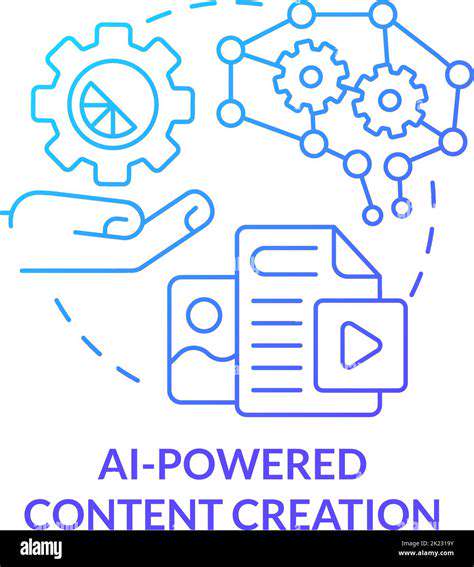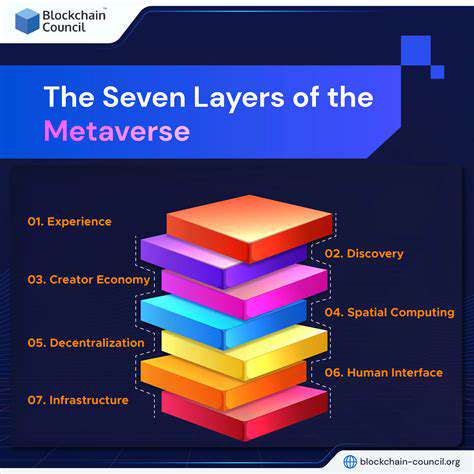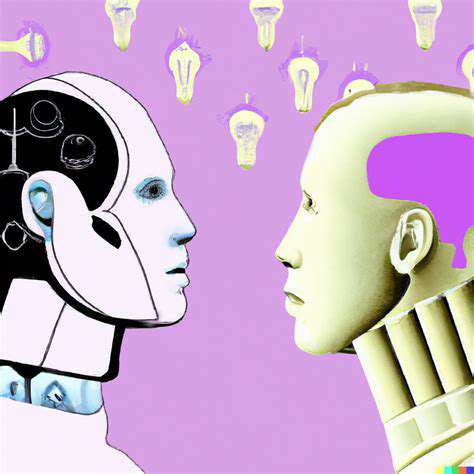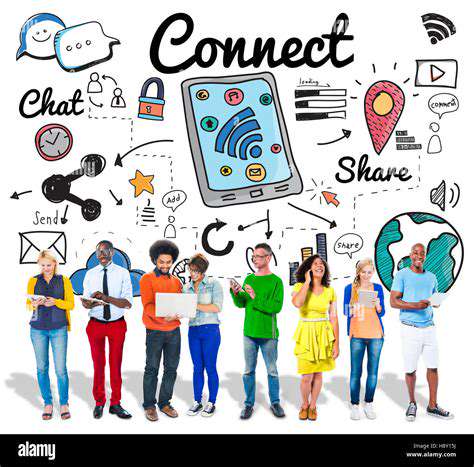Building Interoperable Metaverse Experiences for Seamless Play
Defining Interoperability
The metaverse's evolution hinges on its ability to connect diverse platforms seamlessly. True interoperability means users can fluidly navigate between virtual spaces while retaining their digital identities and assets. Without unified protocols, we risk creating isolated digital silos rather than a cohesive virtual universe. The challenge lies in developing shared frameworks for data exchange that respect platform uniqueness while enabling cross-platform functionality.
Establishing Data Standards
Universal data formats serve as the foundation for cross-platform compatibility. Consider digital avatars - their visual attributes, behavioral patterns, and inventory systems require standardized encoding. These specifications must balance precision with flexibility, allowing for platform-specific enhancements while maintaining core compatibility. Current initiatives like glTF for 3D assets demonstrate how open standards can accelerate ecosystem growth.
Developing Common Protocols
Communication protocols act as the digital handshake between metaverse components. They govern everything from microtransactions to spatial audio synchronization. Emerging solutions leverage blockchain technology for decentralized verification while maintaining performance requirements. The protocol layer must address latency sensitivity for real-time interactions across distributed networks.
Standardizing User Authentication
Digital identity management presents both technical and philosophical challenges. A self-sovereign identity framework gives users control while preventing fraudulent activities. Solutions like decentralized identifiers (DIDs) combined with verifiable credentials offer promising pathways. These systems must balance security with accessibility, avoiding cumbersome verification processes that hinder user experience.
Addressing Asset Interoperability
Virtual property rights require robust technical and legal frameworks. NFT-based solutions show potential for representing ownership across platforms, but face scaling challenges. The standardization process must account for varying platform economies, ensuring fair valuation during cross-platform transfers. Smart contract templates could automate royalty distributions when assets migrate between ecosystems.
Facilitating Application Integration
API standardization reduces development friction while preserving platform differentiation. RESTful interfaces combined with WebAssembly modules enable performant cross-platform functionality. The ideal framework supports gradual adoption, allowing platforms to implement interoperability features incrementally without complete architectural overhauls.
Encouraging Collaboration and Standardization Bodies
Industry consortia play a critical role in avoiding competing standards. The Metaverse Standards Forum exemplifies how competitors can collaborate on foundational technologies. Successful standardization requires balancing open participation with decisive leadership to prevent paralysis by committee. Regular interoperability testing events help validate implementations and identify edge cases.

Modern education faces unprecedented challenges from digital distractions. The constant barrage of notifications and social media updates fragments student attention, undermining deep learning. This cognitive overload manifests in reduced information retention and increased academic anxiety, particularly during critical study periods.
Beyond the Technical: Cultivating a Collaborative Ecosystem

Cultivating a Culture of Innovation
Genuine innovation stems from organizational psychology more than technological investment. Teams produce breakthrough ideas when leadership creates psychological safety for experimentation. This involves reframing failures as learning milestones and celebrating iterative progress. Regular innovation sprints with cross-functional participation often yield unexpected solutions.
Understanding the Human Element
Creative output correlates strongly with emotional intelligence in leadership. Managers who practice active listening uncover hidden potential in team members. Diversity in cognitive styles - from systematic thinkers to intuitive creators - produces more robust solutions when properly harnessed.
Embracing Failure as a Catalyst
Progressive organizations institutionalize failure analysis through structured retrospectives. These sessions identify root causes without personal blame, extracting maximum learning from setbacks. Some companies maintain failure resumes documenting lessons from unsuccessful initiatives.
Strategic Vision and Alignment
Effective innovation strategies balance long-term vision with short-term experimentation. The 70-20-10 rule allocates resources between core improvements, adjacent innovations, and transformational projects. This framework prevents innovation efforts from becoming disconnected from business objectives.
Building a Robust Feedback Loop
Continuous improvement systems thrive on multi-directional feedback. 360-degree reviews combined with real-time pulse surveys create responsive innovation cultures. Digital suggestion platforms with upvoting mechanisms help surface the best ideas from across the organization.
Resource Allocation and Support
Innovation requires dedicated time and space. Leading companies implement 20% time policies allowing employees to pursue passion projects. Physical innovation labs with prototyping tools accelerate idea validation cycles.
Measuring and Recognizing Success
Beyond traditional KPIs, innovative organizations track leading indicators like experiment velocity and idea conversion rates. Peer-nominated innovation awards often prove more meaningful than top-down recognition programs. Some firms tie a portion of bonuses to collaborative innovation metrics.
The Future of Seamless Play: A Vision for Interconnected Worlds
Bridging the Gaps: Interoperability's Crucial Role
True platform convergence requires solving the walled garden dilemma. The solution lies in layered interoperability - core standards for essential functions with optional extensions. This approach mirrors how email protocols evolved, allowing for basic message exchange while supporting advanced features.
Enhanced Player Experiences: Beyond the Horizon
Cross-platform persistence enables unprecedented narrative depth. Imagine character development spanning multiple game genres, with skills transferring contextually. This requires sophisticated attribute mapping systems that preserve game balance while honoring player investment.
The Economic Implications: A New Frontier
Interoperable digital assets create liquid secondary markets. The resulting price discovery mechanisms could stabilize virtual economies currently prone to inflation. Platform-agnostic creator royalties would incentivize higher quality user-generated content.
Technical Challenges and Solutions: Paving the Way
State synchronization across platforms presents complex engineering challenges. Event sourcing architectures with conflict-free replicated data types (CRDTs) offer promising technical approaches. These systems must handle network partitions gracefully while maintaining gameplay integrity.
Community and Collaboration: The Human Element
Cross-platform communities require new moderation tools and social features. Reputation systems that transcend individual games could foster better online behavior. The most successful platforms will blend technical interoperability with social interoperability, creating shared cultural contexts across virtual worlds.
Read more about Building Interoperable Metaverse Experiences for Seamless Play
Hot Recommendations
- Immersive Culinary Arts: Exploring Digital Flavors
- The Business of Fan Funded Projects in Entertainment
- Real Time AI Powered Dialogue Generation in Games
- Legal Challenges in User Generated Content Disclaimers
- Fan Fiction to Screenplays: User Driven Adaptation
- The Evolution of User Driven Media into Global Entertainment
- The Ethics of AI in Copyright Protection
- Building Immersive Narratives for Corporate Training
- The Impact of AI on Music Discovery Platforms
- AI for Audience Analytics and Personalized Content









